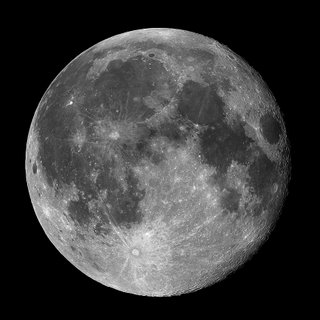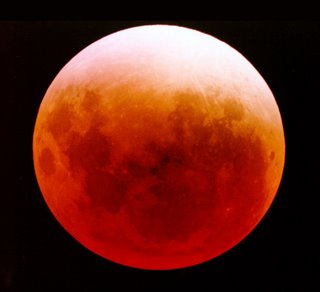Eclipses
Not really an expert in the field, but I think these events are noteworthy as they remind us that we live in a vast world.
Let me introduce these three celestial bodies to you first:
1. Earth
The planet that orbits the sun between the planets Venus and Mars at a mean distance from the sun of 149600000 km. It has a mass of about 5975000000000000000000000 kg (I would use standard form if I could) and an equatorial diameter of 12756.3 km. The earth consists of three layers: the gaseous atmosphere, the liquid hydrosphere, and the solid lithosphere. The solid part of the earth also consists of three layers: the crust, with a mean thickness of about 32 km under the land nad 10 km under the seas; the mantle, which extends some 2900 km below the crust; and the core, part of which is believed to be liquid, have a maximum relative density of 13 and a maximum temperature of 6400 K. (0 Kelvin = - 273ºC; linear relationship)

2. Moon
Earth's only natural satellite, which orbits the earth at a mean distance of 384400 km. It has a diameter of 3476 km. It has no atmosphere or surface water. Its surface temperature varies between 80 K and 400 K. It is the only celestial body outside the earth to have been reached by man.

3. Sun
The star at the centre of the solar system. It is a typical main-sequence dwarf star (I can't believe I still remember some Astrophysics I learnt a while ago). It has a diameter of about 1329000 km and a mass of 1900000000000000000000000000000 kg. Hydrogen (75%) and helium (25%) are the main constituents, with less than 1% heavier elements. Its surface temperature can reach 5800 K, while its core can reach 15600000 K.

Now to the fun part:
1. Total solar eclipse
Occurs when when the sun, earth, and moon are aligned and the full shadow of the moon falls on earth.
Most recent total solar eclipse event: March 29, 2006

2. Total lunar eclipse
Occurs when the sun, earth, and moon are aligned and the shadow of the earth falls on the moon and covers it completely.
Most recent total lunar eclipse event: October 28, 2004

Hi-res photos from various sources.
More info at NASA Eclipses
Let me introduce these three celestial bodies to you first:
1. Earth
The planet that orbits the sun between the planets Venus and Mars at a mean distance from the sun of 149600000 km. It has a mass of about 5975000000000000000000000 kg (I would use standard form if I could) and an equatorial diameter of 12756.3 km. The earth consists of three layers: the gaseous atmosphere, the liquid hydrosphere, and the solid lithosphere. The solid part of the earth also consists of three layers: the crust, with a mean thickness of about 32 km under the land nad 10 km under the seas; the mantle, which extends some 2900 km below the crust; and the core, part of which is believed to be liquid, have a maximum relative density of 13 and a maximum temperature of 6400 K. (0 Kelvin = - 273ºC; linear relationship)

2. Moon
Earth's only natural satellite, which orbits the earth at a mean distance of 384400 km. It has a diameter of 3476 km. It has no atmosphere or surface water. Its surface temperature varies between 80 K and 400 K. It is the only celestial body outside the earth to have been reached by man.

3. Sun
The star at the centre of the solar system. It is a typical main-sequence dwarf star (I can't believe I still remember some Astrophysics I learnt a while ago). It has a diameter of about 1329000 km and a mass of 1900000000000000000000000000000 kg. Hydrogen (75%) and helium (25%) are the main constituents, with less than 1% heavier elements. Its surface temperature can reach 5800 K, while its core can reach 15600000 K.

Now to the fun part:
1. Total solar eclipse
Occurs when when the sun, earth, and moon are aligned and the full shadow of the moon falls on earth.
Most recent total solar eclipse event: March 29, 2006

2. Total lunar eclipse
Occurs when the sun, earth, and moon are aligned and the shadow of the earth falls on the moon and covers it completely.
Most recent total lunar eclipse event: October 28, 2004

Hi-res photos from various sources.
More info at NASA Eclipses
2 Comments:
A PROPHET will appear at the end of time, through whom Allah (God) will set mankind’s affairs straight, and will fill the earth with fairness and justice just as it was filled with wrongdoing and oppression.
His name will be the same as the name of the Prophet Allah. Arabic translations of the Bible also employ it, as do Roman Catholics in Malta (who pronounce it as "Alla").
Prior to his emergence an eclipse of the sun and moon will occur.
I don't think I know...I just know I'm thinking.
your humble servant,
Ancient Clown
Quite a lot of ecilpses of sun and moon has occured already though.
Do you mean together? But how could that happen...
Post a Comment
<< Home